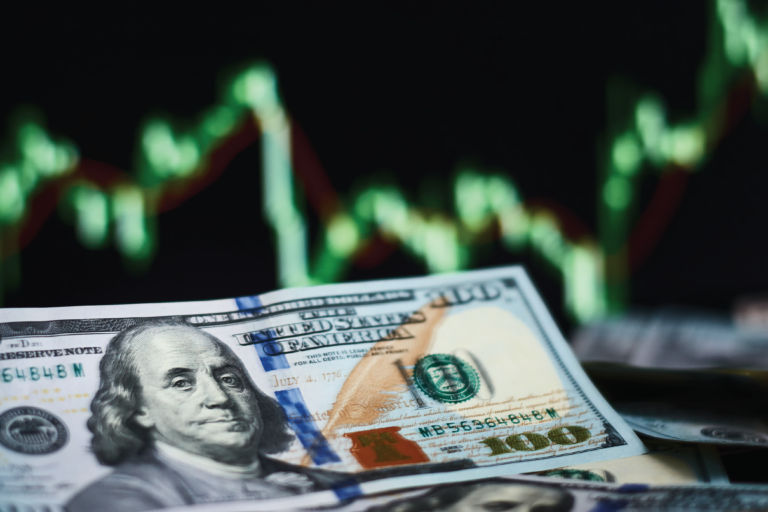As you may have heard, the collapse and takeover by the Federal Deposit Insurance Corporation (FDIC) of Silicon Valley Bank (SVB) and Signature Bank has driven the recent volatility and investor concern of “contagion” in financial markets. SVB, the 16th biggest bank in the US, had operated as a major funding source for Silicon Valley start-ups and venture capital firms for 40 years. Its closure marked the second-largest US bank failure in history.
The Federal Reserve, FDIC, and Treasury department have stepped in to prevent systemic risks from spreading. Government regulators promised that all deposits held by customers at these banks would be covered for their losses. They are even covering deposits above the normal $250,000 limit, overriding the FDIC’s normal cap. President Biden on Monday vowed to do “whatever is needed” to forestall more runs.
What happened? Let’s go over the basic idea of how a bank works. When a bank receives deposits, it only needs to keep a fraction of its deposits available for customer withdrawal. With the rest, it can do two things: (1) make loans, and/or (2) buy securities, usually fixed-income securities (bonds). The difference between the interest received on securities and loans, and the interest paid to depositors is the bank’s profit.
Due to a rapid increase in interest rates by the Fed, in its effort to stem inflation, the fixed income securities that these banks held dropped in value. Most of these securities were long-dated US Treasury Bonds that were purchased when yields were low. Long dated (10 years or more) bonds have the highest sensitivity to interest rate increases, meaning they decline the most when rates rise.
As the Fed hiked rates to 2%, 3%, and 4%, the value of the bank’s bond holdings dropped, causing unrealized losses. Normally this is not a problem—when there is stability of customer deposits, and the banks can hold these securities to maturity. Banks have a minimal risk of insolvency in a normal environment as there’s usually enough deposit flows to cover withdrawal requests. However, when many clients are trying to get their money out, the banks are forced to sell these securities at losses to satisfy customer withdrawals.
This is exactly what happened with SVB and Signature Bank. As short-term rates eclipsed 4%, the interest on bank accounts remained low. Customers took notice and began to exchange bank deposits for higher-yielding instruments. To satisfy withdrawals, banks were forced to sell collateral (US Treasuries) at a loss. As more people withdraw their funds, more losses are realized. Concerns about the presence of further losses drives more depositors to take their money out, creating a domino effect and putting a bank into insolvency.
Most banks hedge their interest rate exposure knowing this is a risk, i.e., they insure against the possibility that rates move higher and cause their securities to drop in value. Unfortunately, SVB and Signature were among the few banks with poor risk management, failing to hedge their interest rate exposure.
Is this the same as the financial crisis of 2008-2009?
It’s important to distinguish the causes of these bank failures from those of the crisis in 2008-2009. Back then, it was a credit crisis—all about bad lending standards, bad loans, subprime mortgages foreclosing, and shadow banking. By the end of the Great Recession of 2008-2009, 600 banks failed. That was more systemic.
This “crisis” seems to be more contained, and SVB and Signature seem to be outliers. They owned fundamentally good collateral in US Treasuries. However, they had bad risk management practices around deposit management and interest rates. Each of these banks quickly grew deposits, converted those funds into long-dated loans and bonds when interest rates were low, and assumed interest rates would not quickly rise. As inflation rose, interest rates jumped, and these longer-term bonds lost value. The flaw was that these banks never thought their customer base would rush for the door. They assumed depositors would always keep their money at the bank, even if it exceeded FDIC insurance limits.
These two banks’ failures are unique in that other regional banks have not reported the same concentration of uninsured deposits and unrealized losses. Going forward, it’s likely that the Fed will tighten regulations on large regional banks. This should result in them being more risk averse, tightening their lending standards, and hedging their interest rate exposure.
The Fed is now stuck between a rock and a hard place. On the one hand, it’s raising rates to try and curb inflation, which is stubbornly above the 2% target. On the other hand, raising rates could lead to more losses and potential insolvency for regional banks. Further customer withdrawals are possible as they move toward higher-yielding securities or transfer deposits to larger, better capitalized banks. The half-point rate hike that looked like a certainty this month is looking less likely now. Market volatility is likely to continue. However, other sectors like Technology and Consumer Staples are holding up well, indicating that right now the market isn’t seeing this as a systemic crisis.
There’s been recent panic selling from investors who are concerned about the stability of other banks and the whole industry broadly. However, this should be less of a concern for long-term investors who hold broadly diversified portfolios. If you’re invested in an ETF or mutual fund, your exposure to any one bank is extremely miniscule. In addition, your exposure to the banking sector is also a very small part of your overall portfolio. The ETFs and mutual funds we bought for our clients had very limited exposure to SVB and Signature Bank.










